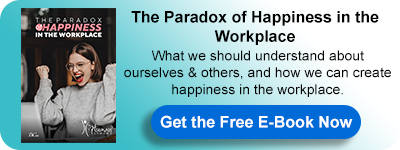Accomplishment
It's almost sunset on a warm Friday afternoon. Dave strolls down the road. He stands for a few seconds admiring the sun as it goes down, smiling contently to himself. Putting his hand in his pocket, he grabs the medal handed to him by his manager today. It’s a small reward for achieving his target of the month. He takes in a deep breath and stretches. He continues his walk down the road. He welcomes the weekend in satisfaction, as he waits eagerly to go back on Monday to his second home, the office.
Achievement, mastery, and competence are all terms used in P.E.R.M.A. to describe achievement.
Working for and achieving goals, mastering an endeavor, and self-motivation to do what you set out to do, contribute to a sense of accomplishment. It contributes to happiness since people may look back on their lives with pride (Seligman, 2012).1
Accomplishment is closely tied to passion and perseverance, which are considered intrinsic motivators. However, on International Happiness Week, let's explore more approaches to help us build this sense within the workplace.
We have mentioned The FIRO Theory in the previous blog with its three dimensions: inclusion, control, and openness. We have looked at two aspects: openness and inclusion. It is now time to move on to the third dimension:
Control
To allow employees to achieve and accomplish tasks, they need to have control, hence autonomy. According to FIRO, control is about the structure in which we live or work. How much control do we want to have over things around us? Control relates a lot to the decision-making process, influence, work structure, and authority. 2
How then can we create a culture of accomplishment within the workplace?
1. Give employees the power to influence decisions related to their jobs. In addition to the necessary authority to make decisions when the time calls for it without resorting back to management. Relatively reducing power and control empowers employees to overcome obstacles. It unleashes their superpowers as they believe they are in charge.
2. Hold employees accountable for the results. It would be best if you gave them control, yet, they need to be responsible. Otherwise, you are setting up the workplace for failure.
3. Set SMART Goals, where employees understand what they need to achieve and when. Clear goals with clear instructions (structure) while leaving room for flexibility and creativity.
4. Help employees reflect on past failures and successes and learn from them. This reflection should help raise their awareness levels, understand their strengths, thus building an environment of continuous improvement.
In the end, both employers and employees play a role in creating a culture that promotes happiness within the organization. Employers are responsible for creating a culture that is inclusive, well structured, and promotes Openness. While employees need to learn from Dave and take advantage of the interventions and efforts companies are making. After all, mutual efforts create happy cultures. Therefore, whether you are an employer or an employee, openness, inclusion, and control are beneficial for both, and in it lies valuable keys for creating happiness.
1Melissa Madeson 2021, Positive Psychology, Accessed 20 July 2021, https://positivepsychology.com/perma-model/
2William C.Schutz (1967). Joy, Expanding Human Awareness. Grove Press, Inc. New York
For more about this topic, download our latest book " The Paradox of Happiness in the Workplace " for FREE:
